Panama City – The Old and the New
Founded in 1519, Panama City is the oldest post-Colombus city on the Pacific, but at the same time it’s one of the newest, boasting a skyline that seems more like Dubai or Hong Kong than anything you would expect to find in Central America. It also has an area in between the two in age, the Casca Antigua which might be called the Goldilocks solution between the old and the new – it’s just right. I recently had an opportunity to explore all three sides of Panama City with Canadian travel operator Adventures Abroad. Read on to find out out why it is such an interesting place.
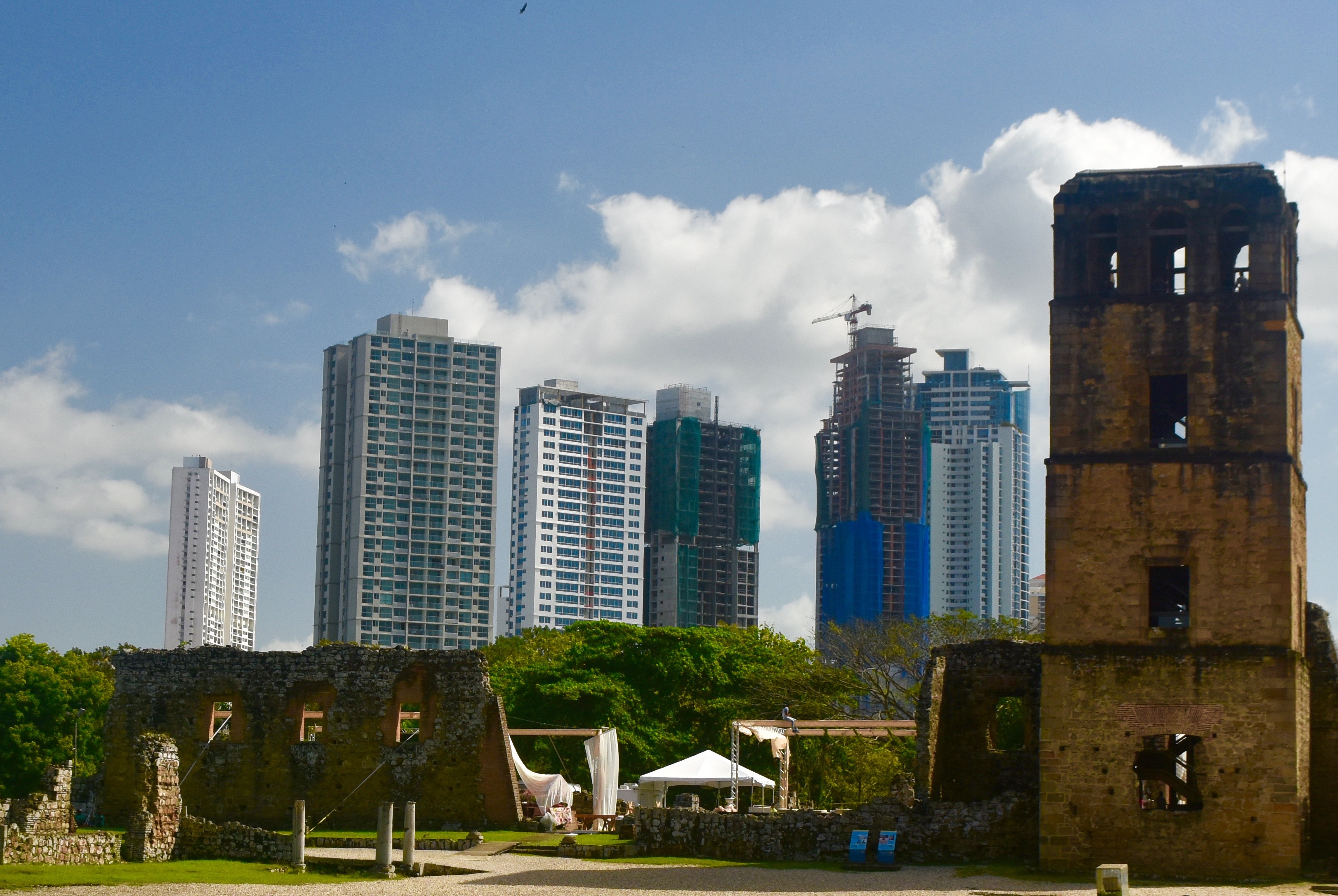
Somewhat perversely I’ll start with the new city first, mainly because it’s pretty hard to ignore. Flying into Panama City airport you can’t help but notice the huge number of high rise buildings that line the waterfront and then driving into the heart of the city you come upon some true architectural gems, the most notable being the F&F Tower which I think is amazing. This is a photo I found on the web as I couldn’t get an unimpeded shot.
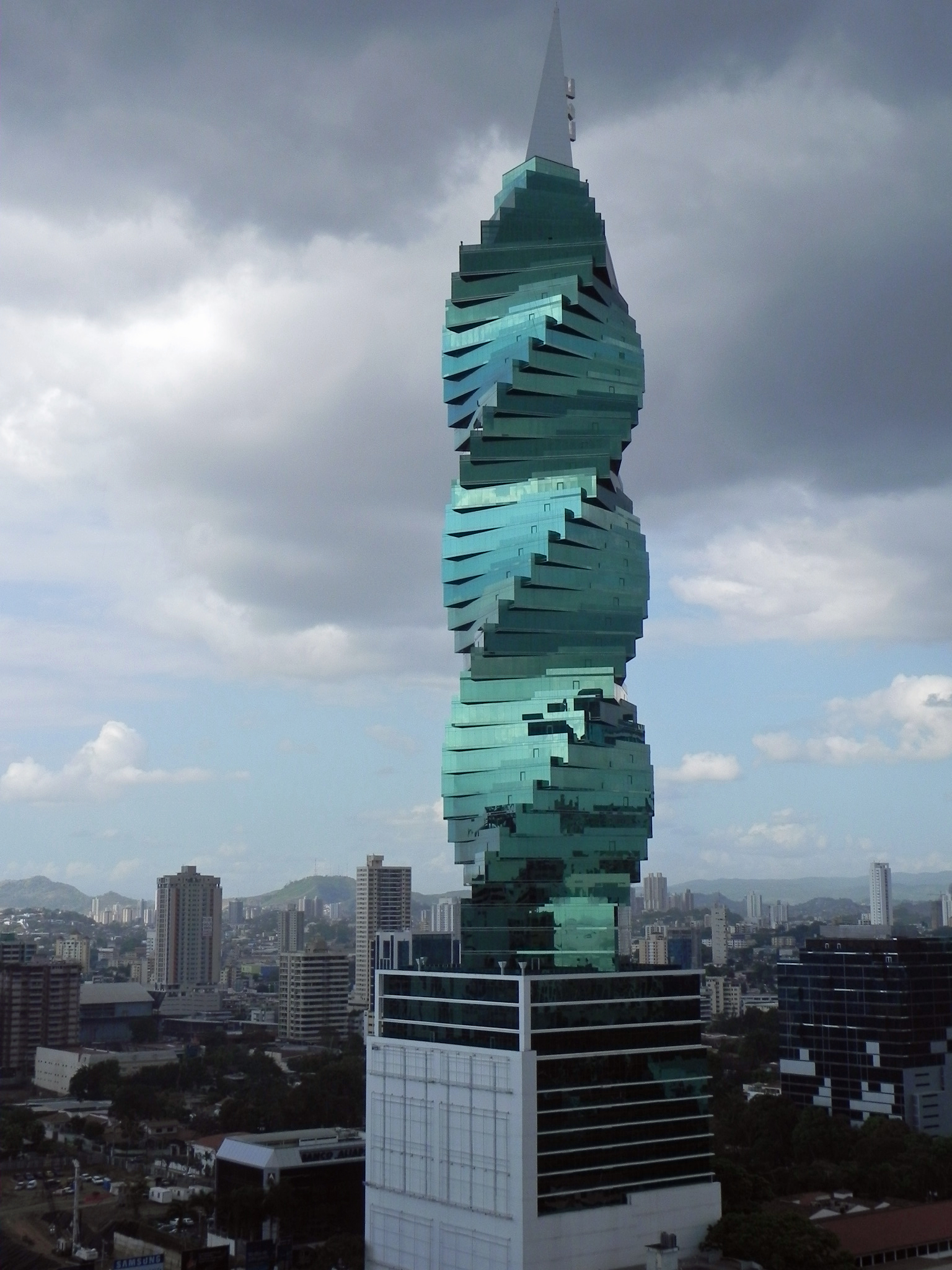
I did get a few shots of my own of unusual designs including this gold-plated building.
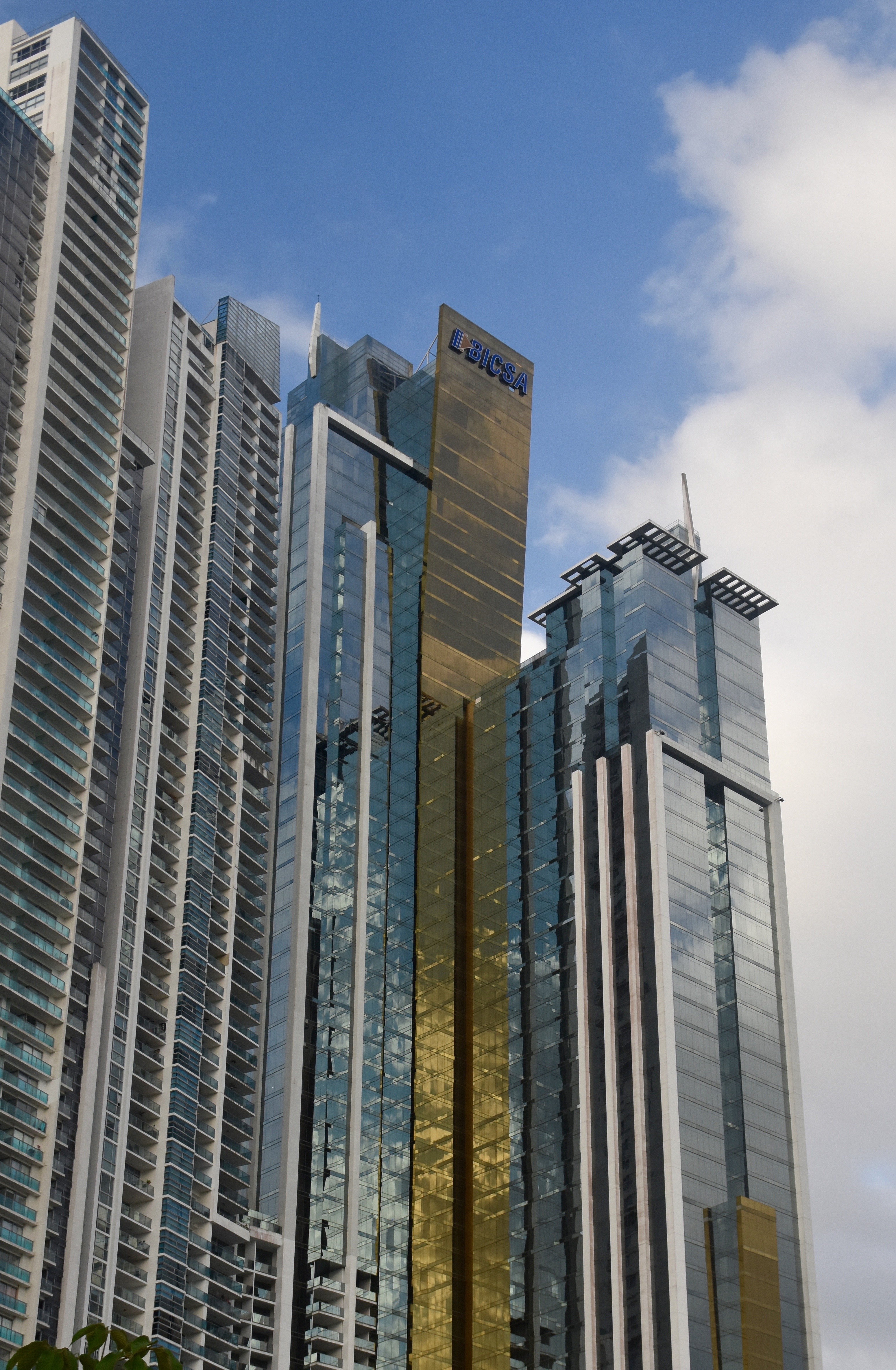
And this multi-hued condo complex.
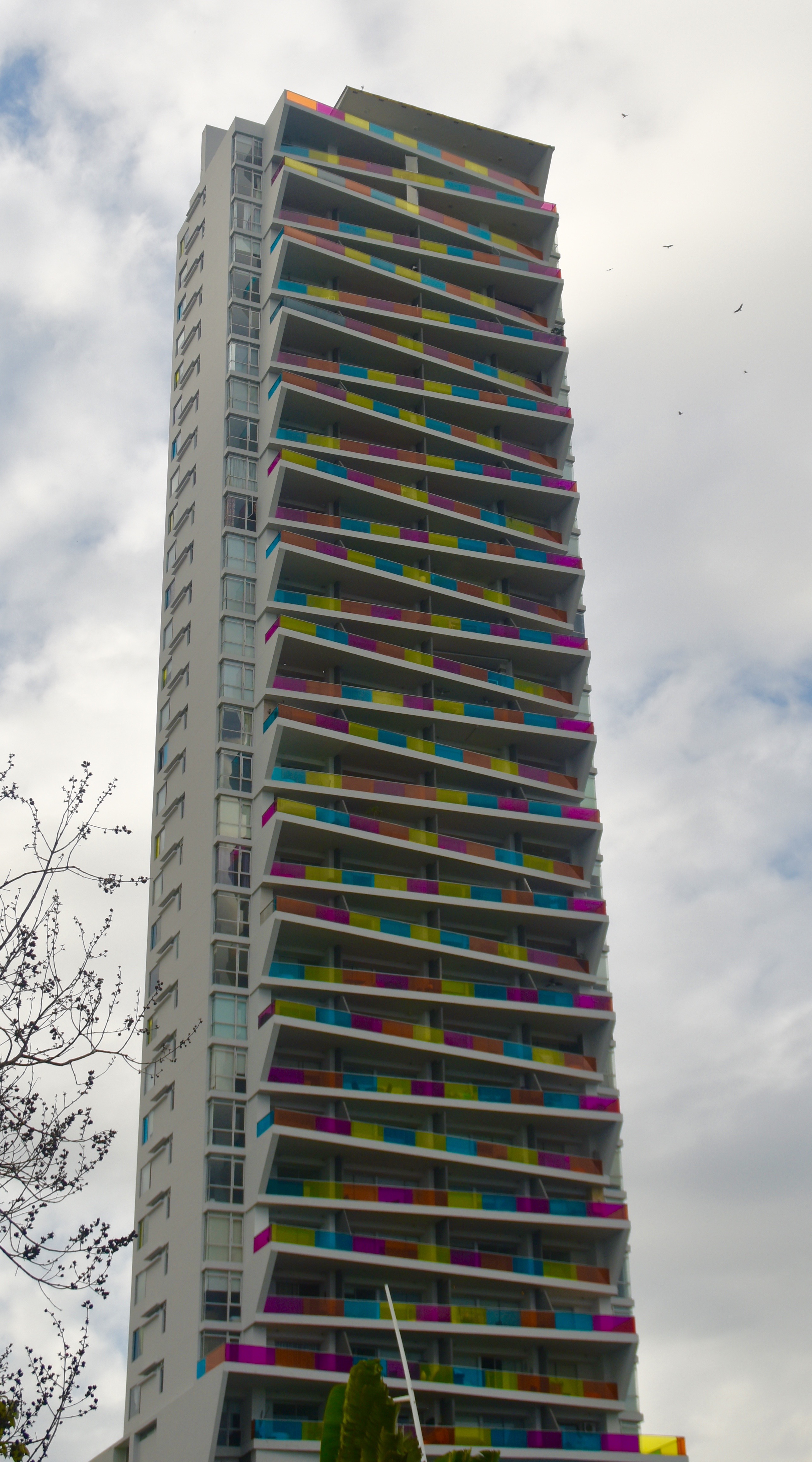
The best place to get a great perspective on the Panama City skyline is to walk along the harbour front park from the fish market to the core of the city. Our Adventures Abroad tour guide Andrés Fernandéz did just that on an unscheduled side trip. While in Colombia, I had asked him where we could get some good ceviche and he said at the Panama City fish market. Remembering my request he led all those who were interested to the fish market by way of the very modern Panama City metro system. The ceviche was fresh, inexpensive and worth the wait. As you can see, we were the only tourists in the place.

Afterwards we took our time walking the two or three miles back to the hotel. The Panama City waterfront was clean, safe and the view spectacular. Does this look like a Banana Republic to you?
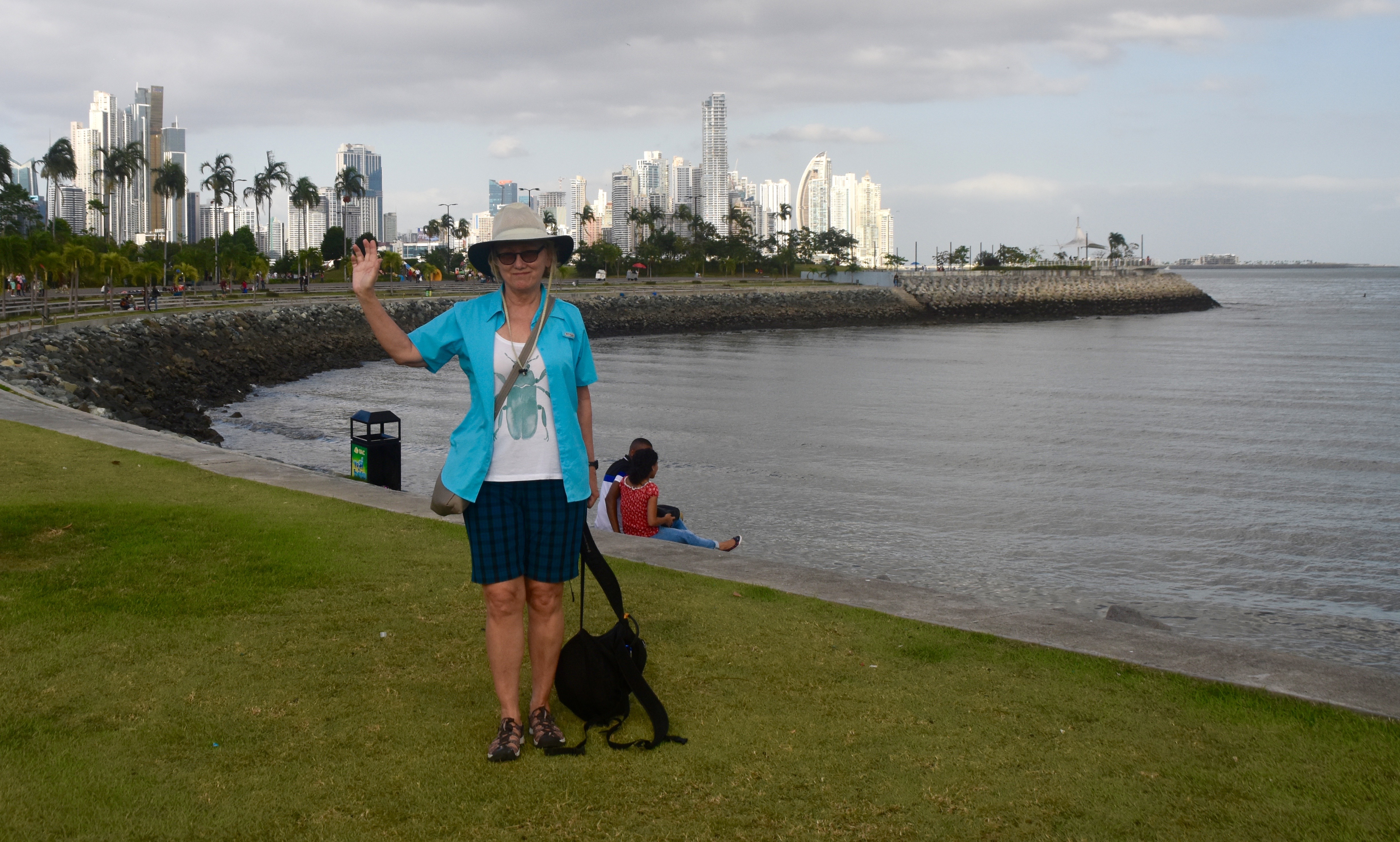
Which begs the question – why all this development in Panama City and not in any other Central American city? I thought the easy answer was money laundering for drug cartels combined with Swiss like banking secrecy, but upon doing a little research that is only part of the answer. The building boom started with the first bona fide skyscraper in 1996. Technically a skyscraper needs to be a minimum of 150 metres or just under 500 feet in height. Panama City now has fifty-two of them, all built between 1996 and 2013. The boom ended when the U.S. and other countries forced Panama to open up its banking industry to oversight by international bodies like the World Bank, but that’s not the whole story.
In April, 2016 journalist Daphne Galizia got her hands on a massive trove of documents from the secretive law firm of Mossack, Fonseca based in Panama City. These documents revealed illicit dealings not of drug lords, but so-called legitimate companies using the firm’s services to set up offshore companies to avoid paying taxes in the home countries. Also, implicated were hundreds of politicians including Vladimir Putin and the Presidents of Iceland and Pakistan who were both forced to resign. For her troubles, Gazilia was assassinated by a car bomb. Mossack, Fonseca went out of business. So there was a lot more to the building boom than just drug money.
An interesting thing was happening while we were in Panama City. The tallest of all the buildings, the Ocean Club was built by, guess who – Donald Trump. As per almost everything The Donald gets involved in, the real investors claimed they were ripped off and wanted Trump ousted from any ownership claim. And like almost every lawsuit Trump defends, he lost and shortly after our time in Panama City the Trump name was removed from the building to the great applause of the Panamanian and other investors.
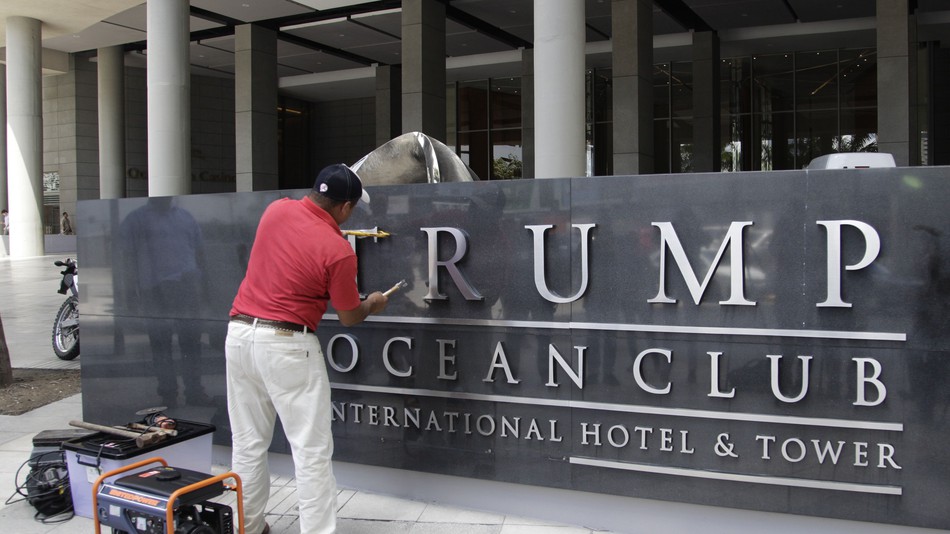
One other thing you can do on the Panama City waterfront is let your friends know you are in Panama, literally.
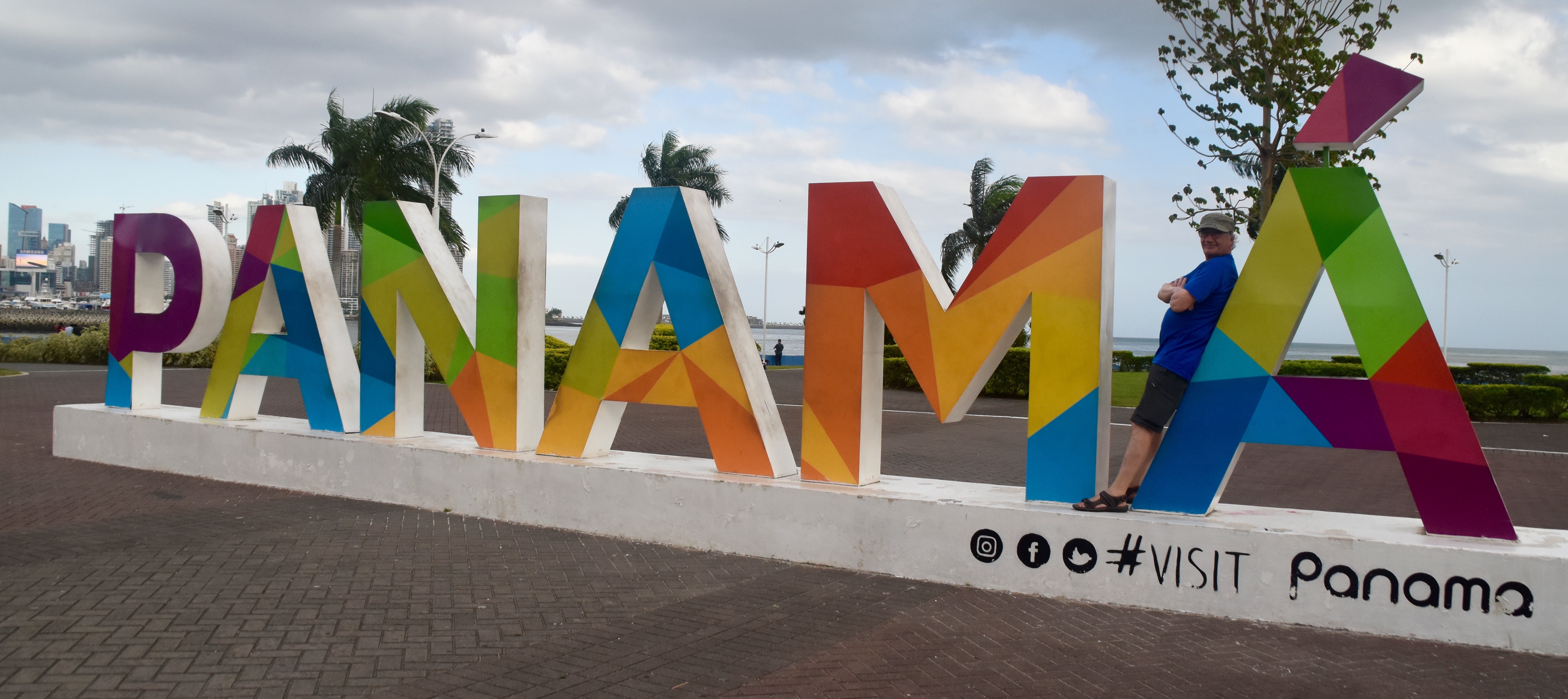
Panama City – Viejo
In case your Spanish is as good as mine, viejo just means ‘old’. So we’ve seen the newest side of Panama City, now it’s time to visit the oldest side. Unlike most cities that just replace old buildings by tearing them down and building new ones on the same site, the original Panama City, which lasted from its foundation in 1519 until 1671, was abandoned and relocated five miles (7.5 km.) away. Why was that, you might ask? Well it had to do with one mean dude – Captain Henry Morgan. Yes, that Captain Morgan, immortalized in figure on the rum bottles with his name and clear inspiration for the look of Captain Jack Sparrow.
Morgan was a Welsh born privateer who had previously sacked Portobelo on the Caribbean side of Panama and the Venezuelan city of Maracaibo, however Panama City was considered unassailable as it was on the Pacific side of Panama. No person in their right mind would attempt to attack it by crossing the mountainous jungles and mosquito infested swamps that lay between it and the Caribbean, or so the Spanish thought. Pretty well all their defences were aimed at preventing a repeat of Sir Francis Drake’s sea borne raids of 1578-79. But, Morgan was no ordinary pirate. He managed to get 1,500 men across the peninsula and to the gates of the city. Realizing they were screwed, the Spanish (not Morgan as is often depicted) put the torch to the city and managed to get most of the loot onto a couple of ships and get away. Still, there was plenty of piratical pillaging and looting to be done and Morgan became a household name in Britain and the prototype for every pirate movie ever made.
I first read about Captain Morgan’s sack of Panama City from a treasure map I found in a box of Shreddies when I was about 10. No B.S. Shreddies had four different treasure maps that were extremely detailed and could raise the blood pressure of any red-blooded kid who loved all things related to pirates. The maps were of Captain Kidd and Oak Island, Blackbeard and the coast of the Carolinas, Anne Bonney and Captain Morgan and his sack of both Portobelo and Panama City. I can’t for the life of me find an image of the Captain Morgan map, but to prove I’m not crazy here is an image of the Captain Kidd map.
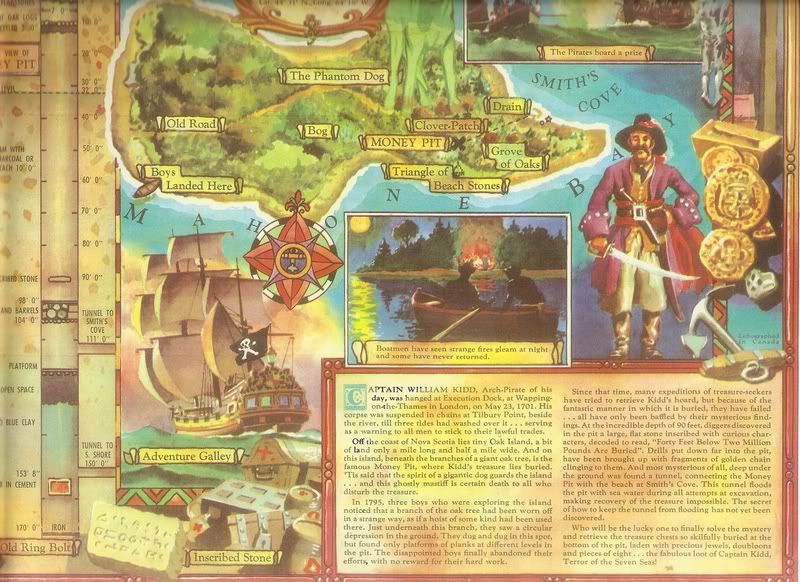
I pored over those maps for hours, absolutely believing everything in them was the gospel truth. So to finally get to the actual site where Morgan really made his name was, for me, an event I had literally waited almost a lifetime for.
Panama Viejo is one of two areas of Panama City that have earned the UNESCO World Heritage Site designation, Casca Antigua being the other. Here is the UNESCO designation description.
Panama City, the oldest continuously occupied European settlement in the Pacific coast of the Americas, was founded in 1519, as a consequence of the discovery by the Spanish of the South Sea in 1513. The archaeological remains of the original settlement (known today as the Archaeological Site of Panamá Viejo) include the Pre-Columbian vestiges of the Cuevan aboriginal occupation of the same name, and currently encompass a protected heritage site covering 32 ha. The settlement was a first rank colonial outpost and seat of a Royal Court of Justice during the 16th and 17th centuries when Panama consolidated its position as an intercontinental hub. Its growth in importance, as it profited from the imperial bullion lifeline, is reflected by the imposing stone architecture of its public and religious buildings.
During its 152 years of existence, the town was affected by slave rebellion, fire and an earthquake, but was destroyed in the wake of a devastating pirate attack in 1671. Since it was relocated and never rebuilt, Panamá Viejo preserves its original layout, a slightly irregular, somewhat rudimentary grid with blocks of various sizes. There is archaeological evidence of the original street pattern and the location of domestic, religious and civic structures. The site is an exceptional testimony of colonial town planning; the ruins of its cathedral, convents and public buildings showcase unique technological and stylistic characteristics of its temporal and cultural context. It also offers invaluable information on a variety of aspects of social life, economy, communications and the vulnerability of a strategic site within the geopolitical dynamics at the height of Spanish imperial power.
The first stop should be the modern museum on site where you can learn a lot more about Panama Viejo and the various privations that wracked it before the privateers arrived.

Inside you will find this replica of Panama Viejo which gives you an idea of just how big the place was. The remains that you can wander through are only about a quarter of the original area.
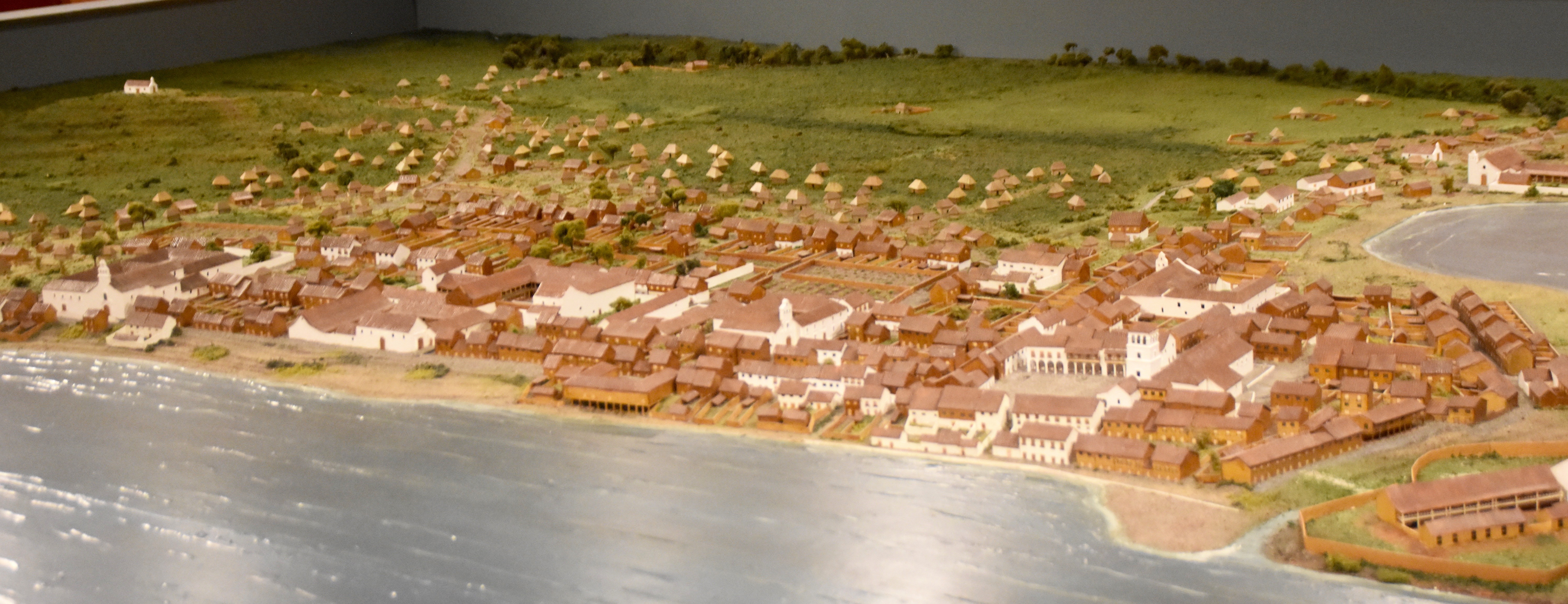
After touring the museum, the most obvious first stop is the old cathedral of which the bell tower is by far the most significant building still standing. You can climb this for a great view of the ruins of Panama Viejo and the new city.

Inside you can find the same type of historical graffiti that mars many ancient sites around the world.
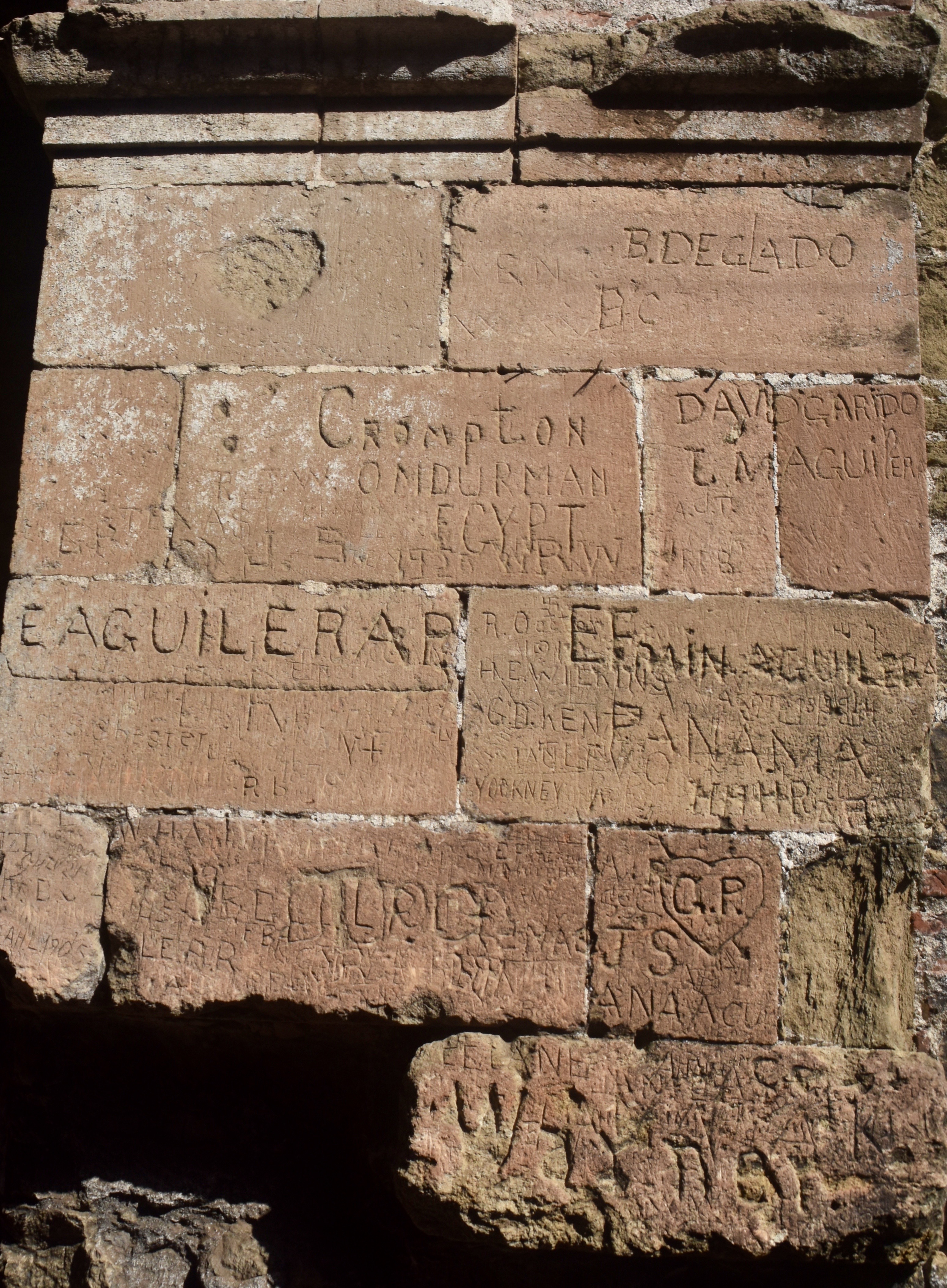
According to the city replica, Panama Viejo was a priest riddled place with at least half a dozen monasteries and a few conventsas well. These are the remains of the Dominican Monastery.
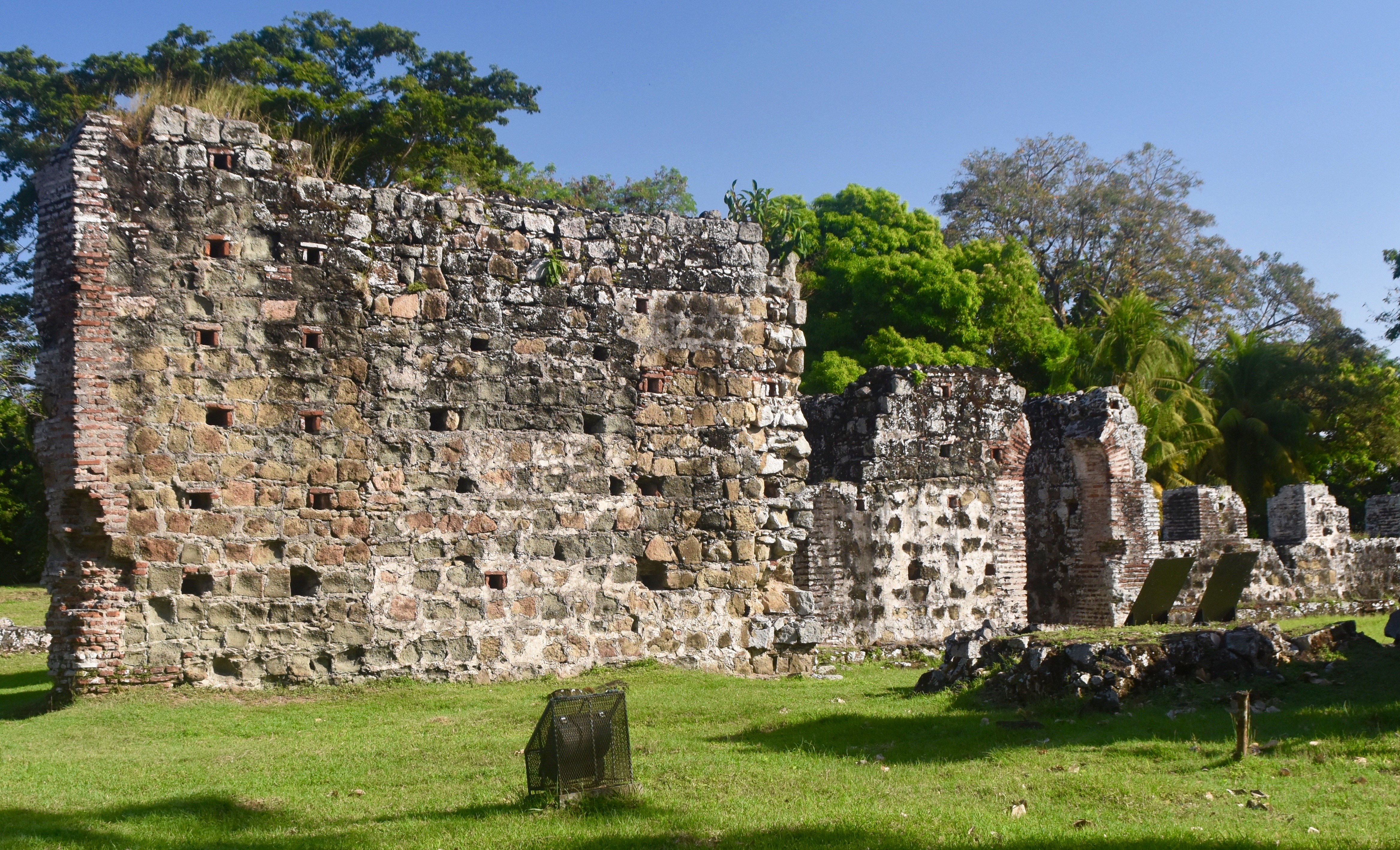
And the Jesuits.
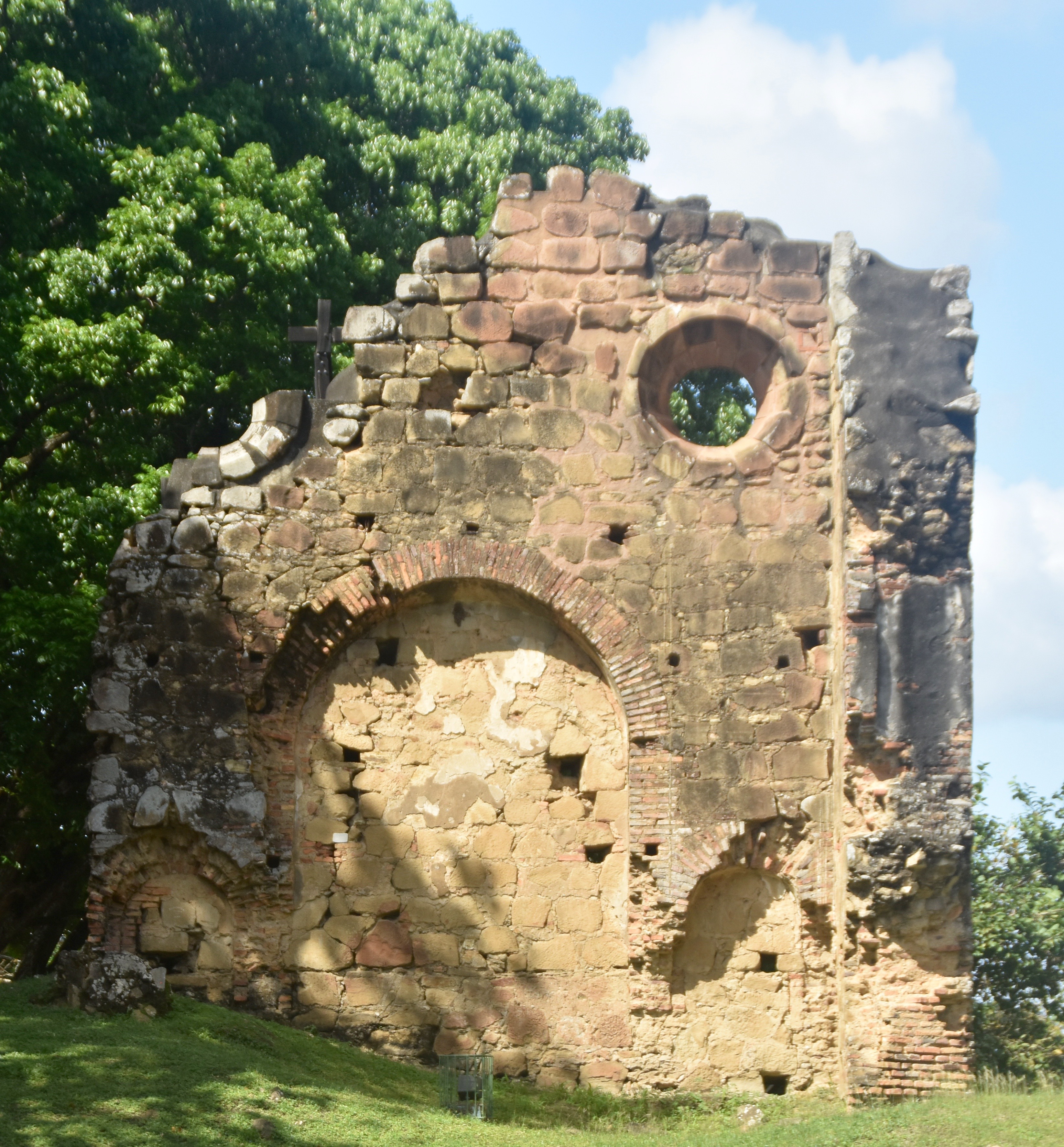
I asked our local guide about these columns and he didn’t know what they were. They seem to belong more in a Roman ruin than something you’d find in the New World.
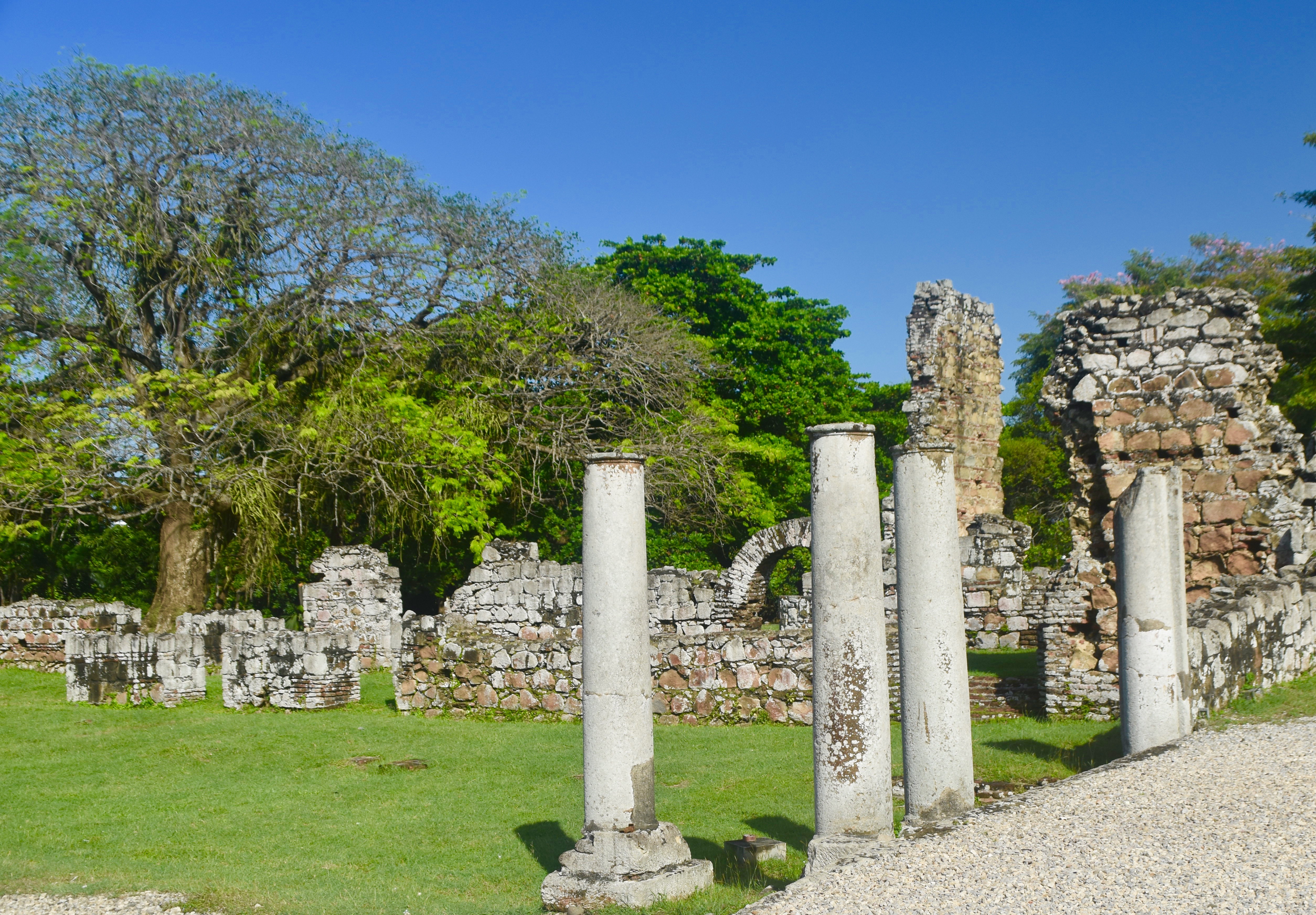
As with most Spanish colonial cities, this was an aboriginal settlement for hundreds of years prior to the arrival of the Europeans. Current archaeological diggings are revealing the graves of these earliest Panama City residents.
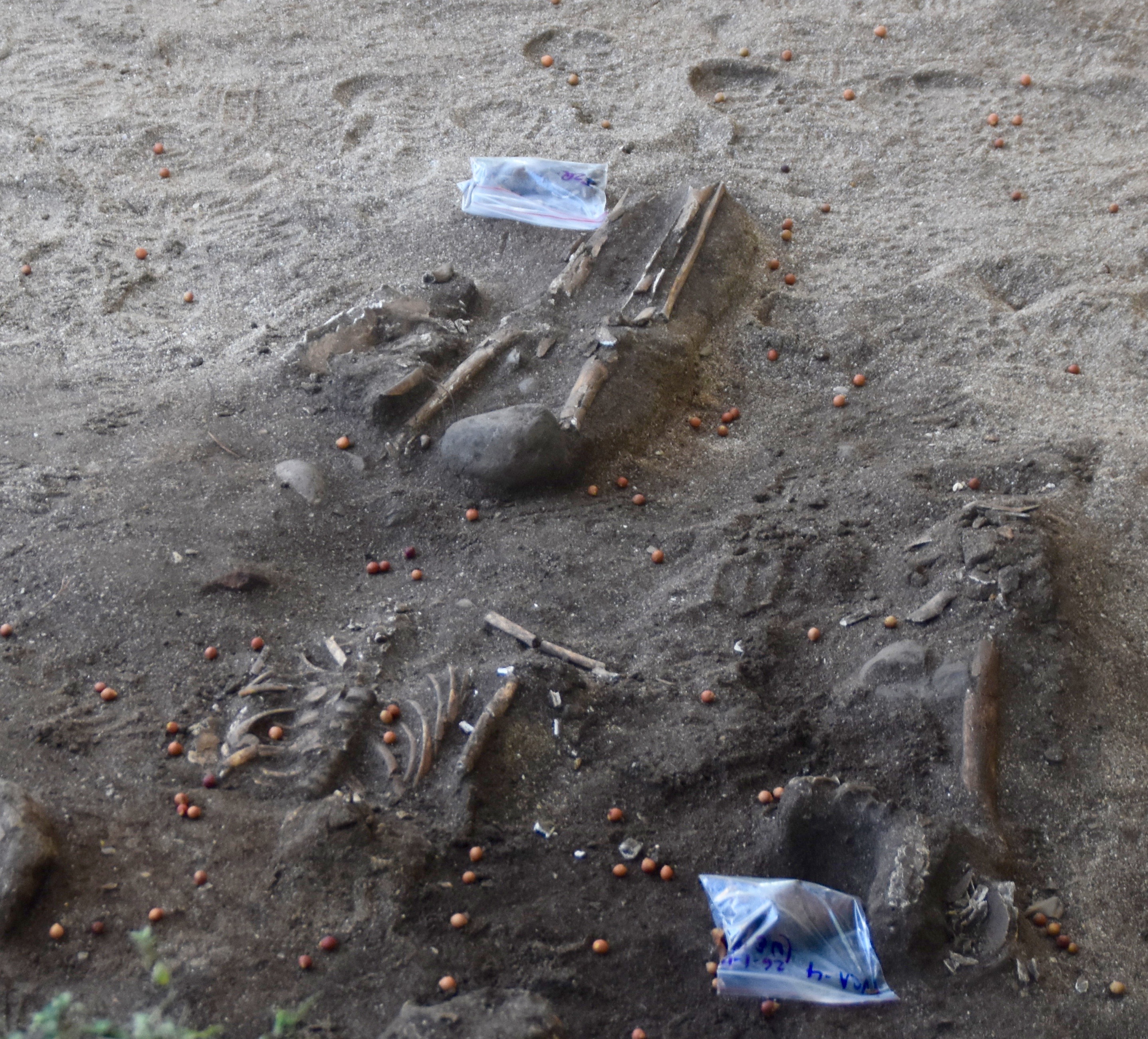
Walking around Panama Viejo with the modern high rises in the background you do get a sense that, no matter what crises the people of Panama City might face, whether it be Captain Morgan or the scar-faced Manuel Noriega, life goes on.
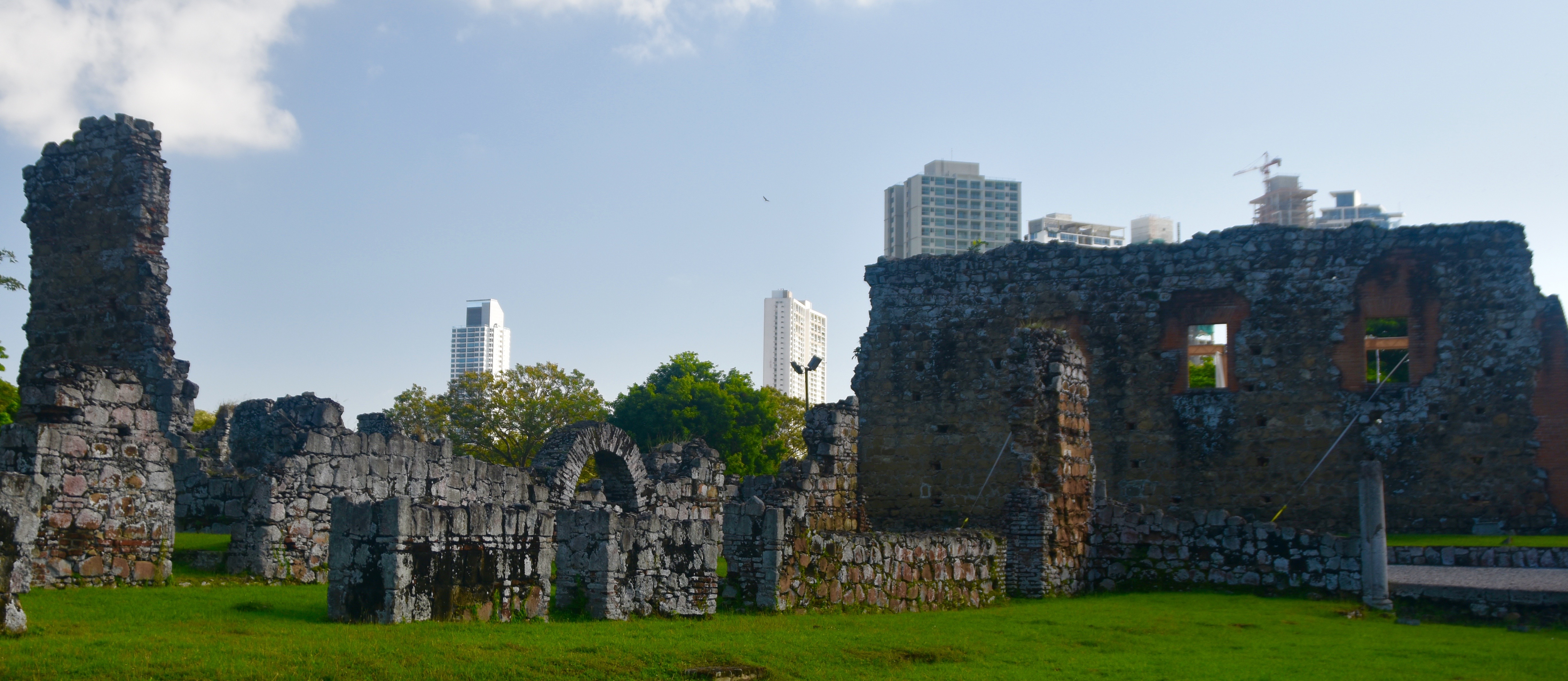
Casca Antigua
And so it did. Realizing that Panama Viejo was not the ideal location for a city, after Morgan’s raid and the fires, an entirely new settlement was started around a small peninsula that could easily be fortified from attack by land or sea. The obvious name for this place would be Panama Nuevo (new Panama) right? Wrong. Today it’s called Casca Antigua which essentially means something like the “Old Quarter” or “Historic District”. Whatever it means, it’s an absolutely delightful area to just ramble around and explore the plazas, churches, restaurants, bars and walk the walls of the remaining ramparts. Most of it dates from the 19th and early 20th centuries and much has been restored to the original brightly coloured exteriors that reminded me of a smaller version of Cartagena in some ways. Andrés took us to Casca Antigua a couple of times during our stay in Panama City as it has some of best restaurants in the city.
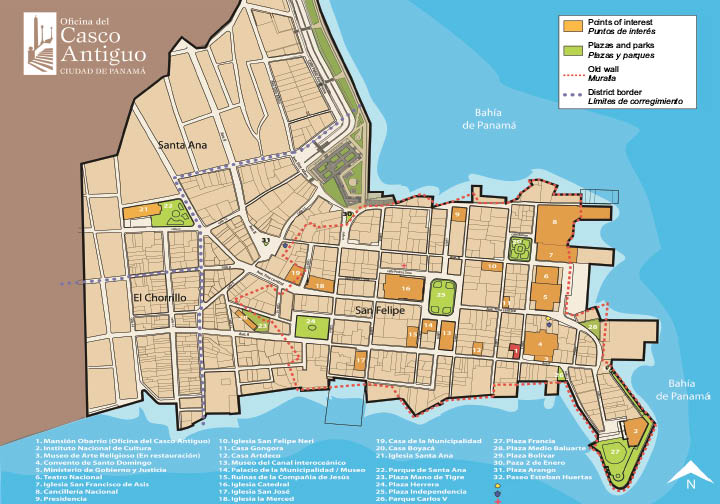
Here a just a few of my highlights from the Casca Antigua starting with the Panama Canal Museum which is a must visit before seeing the canal. Stupidly, it does not allow any photography so I can’t show any of the many exhibits.
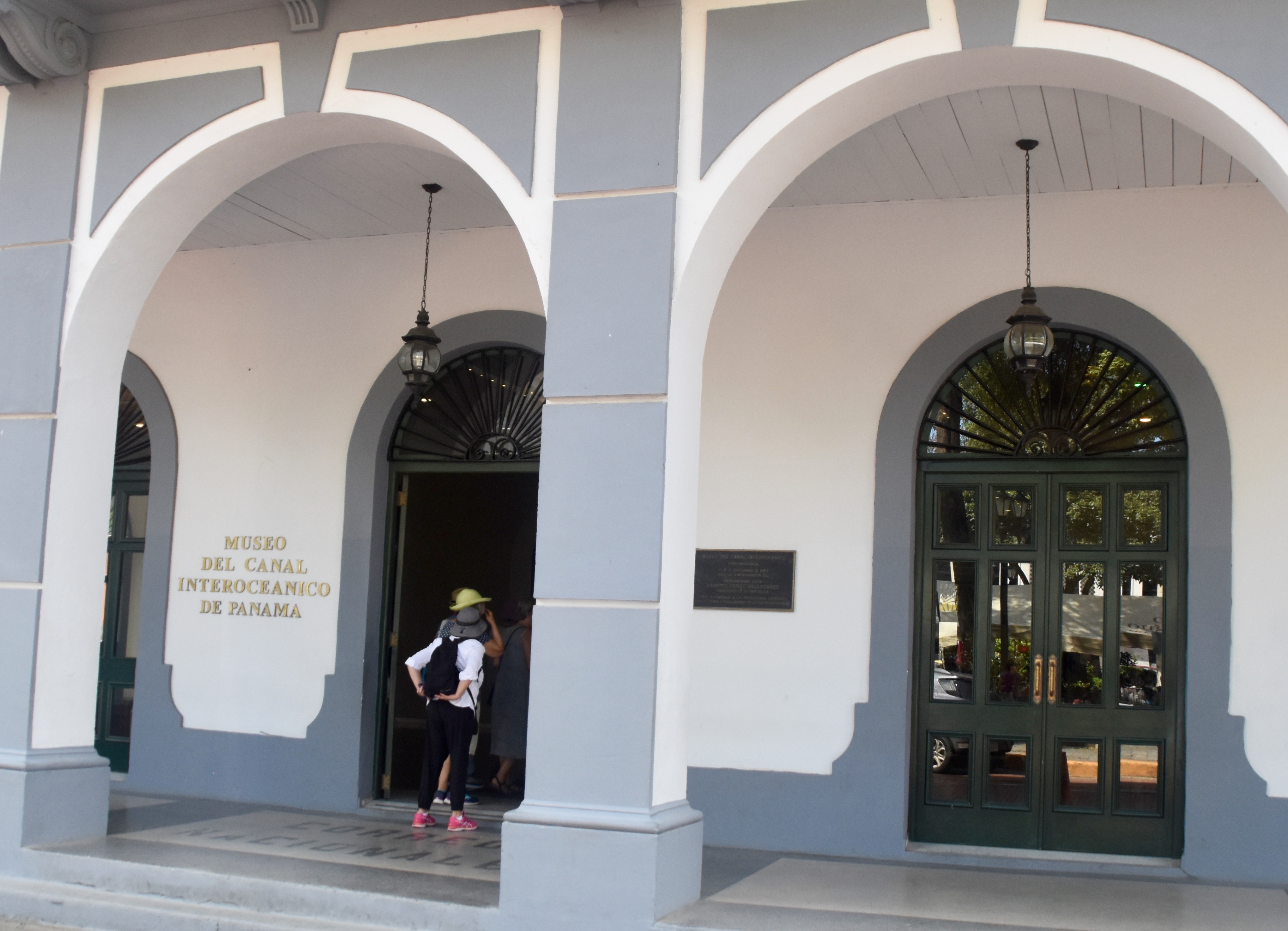
Just like I never pass up an opportunity to be photographed with George Washington, so it is with Simón Bolívar in Latin American countries. While George managed to father only one country, Simón sired six, including Panama, although originally as a province of Colombia. Note the beautiful church steeple in the background. These pastel colours are a trademark of Casca Antigua.
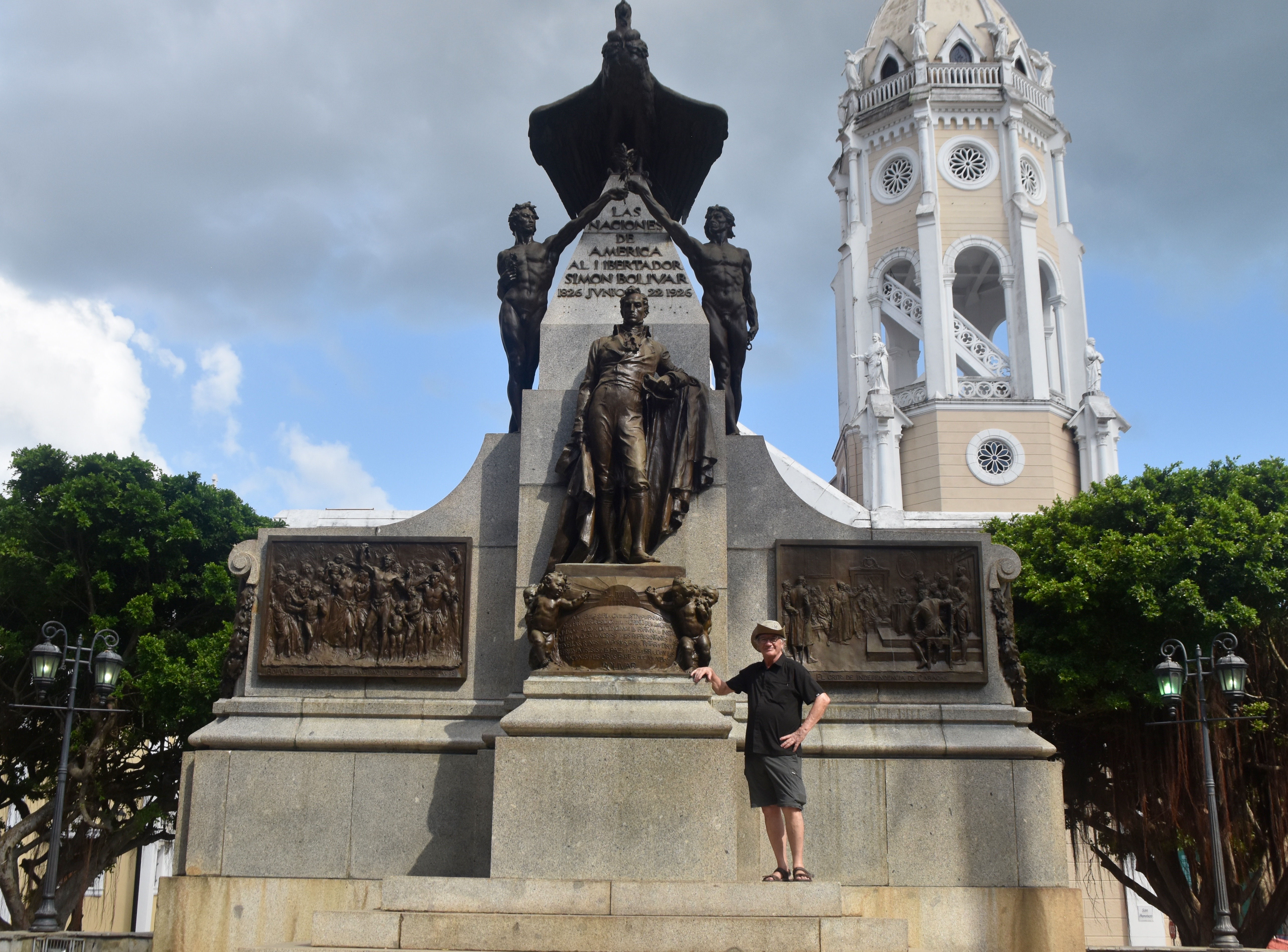
Speaking of pastel colours, how about these buildings?
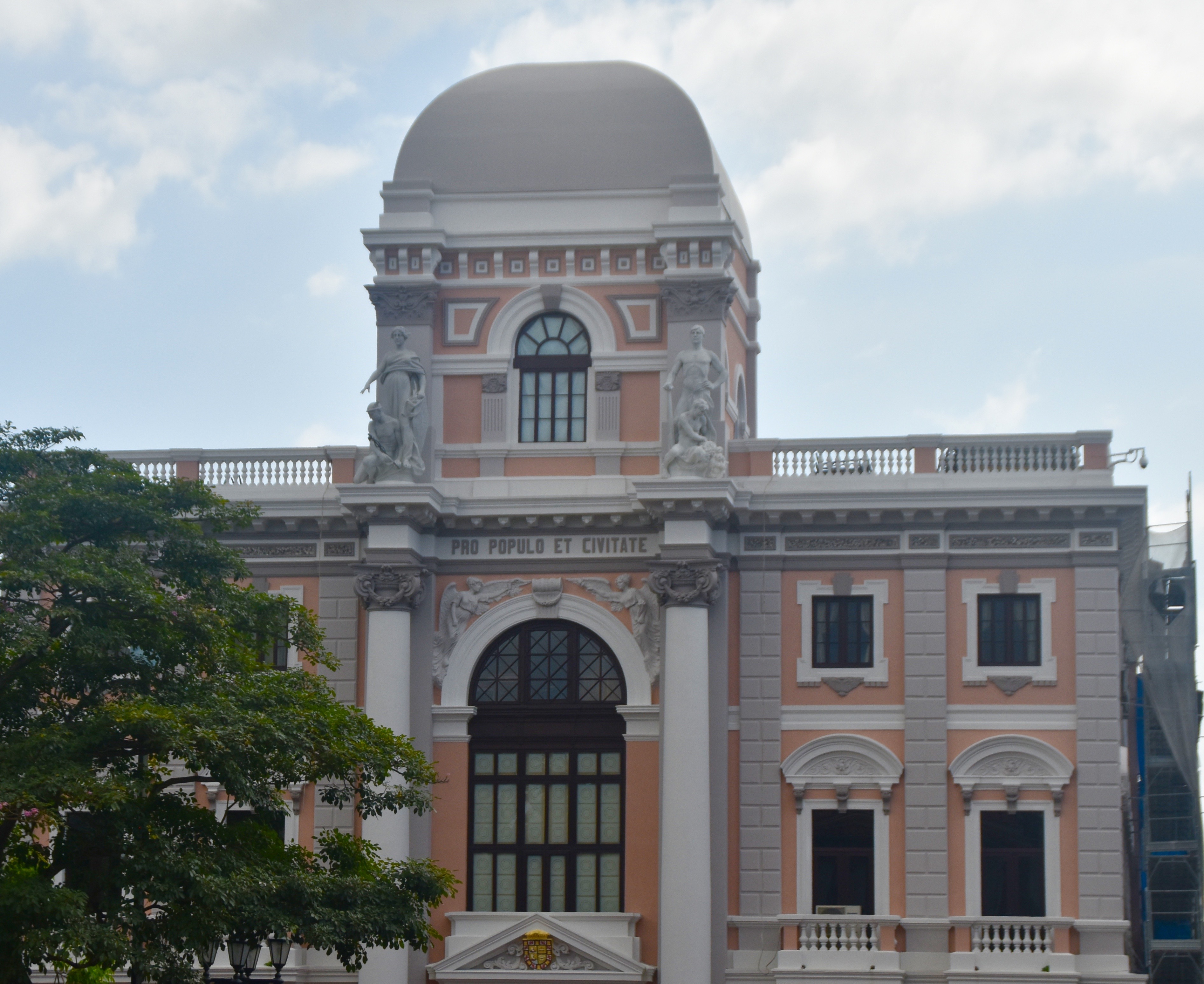
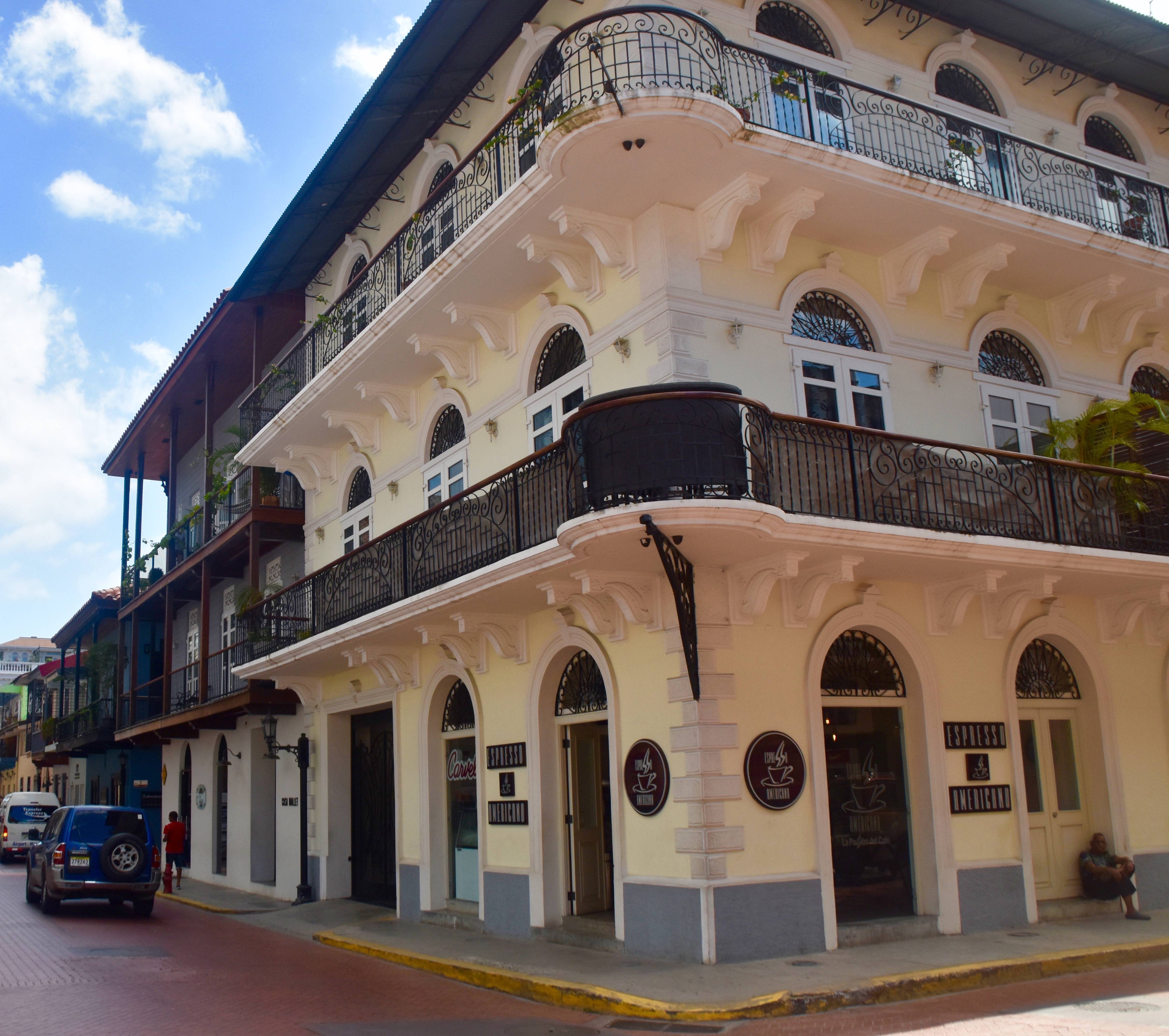
If you want something bolder Casca Antigua has that too.
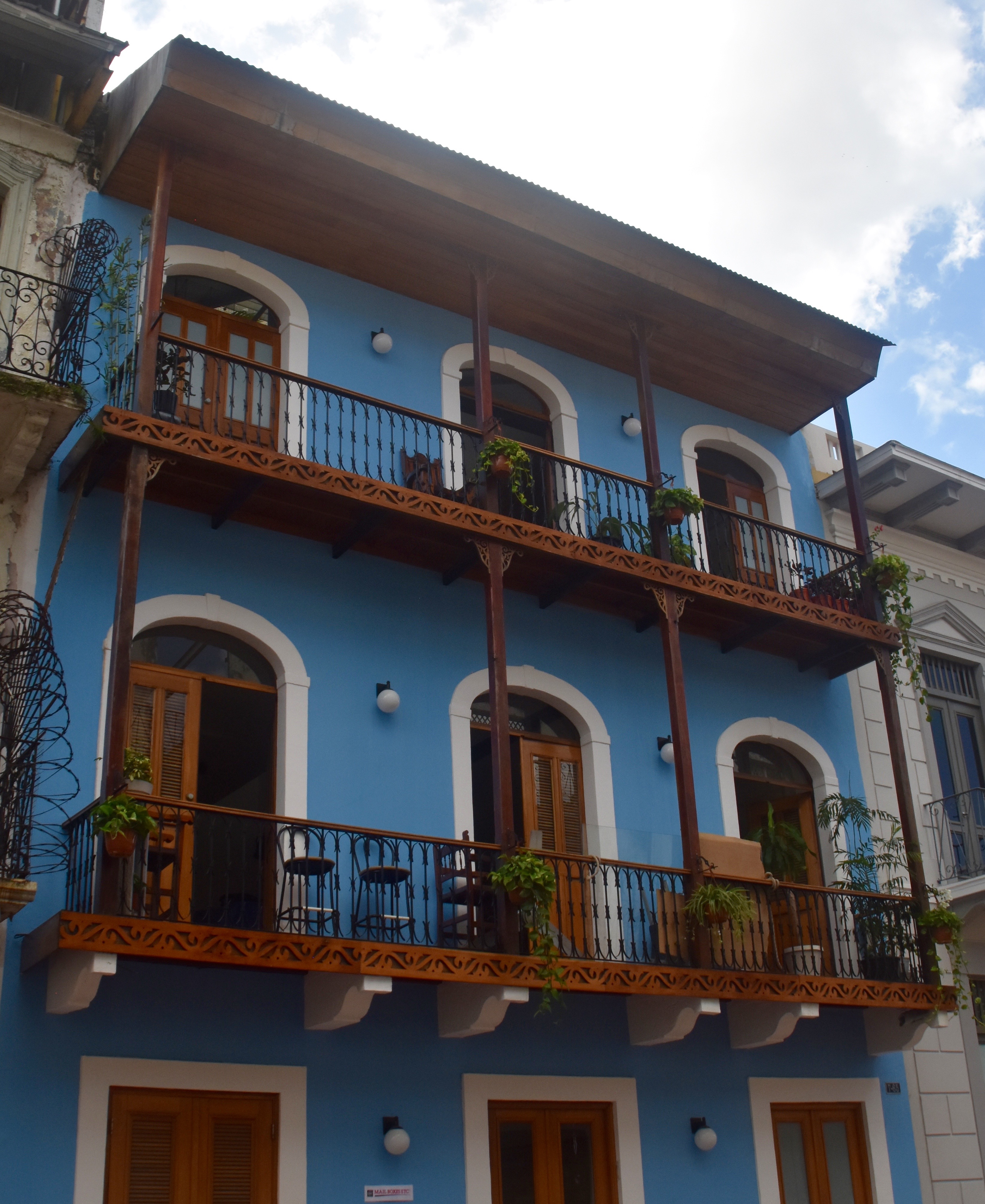
Every major Latin American city seems to have a place where Simón Bolívar slept, another similarity to George Washington. This is Casca Antigua’s Bolívar Palace.
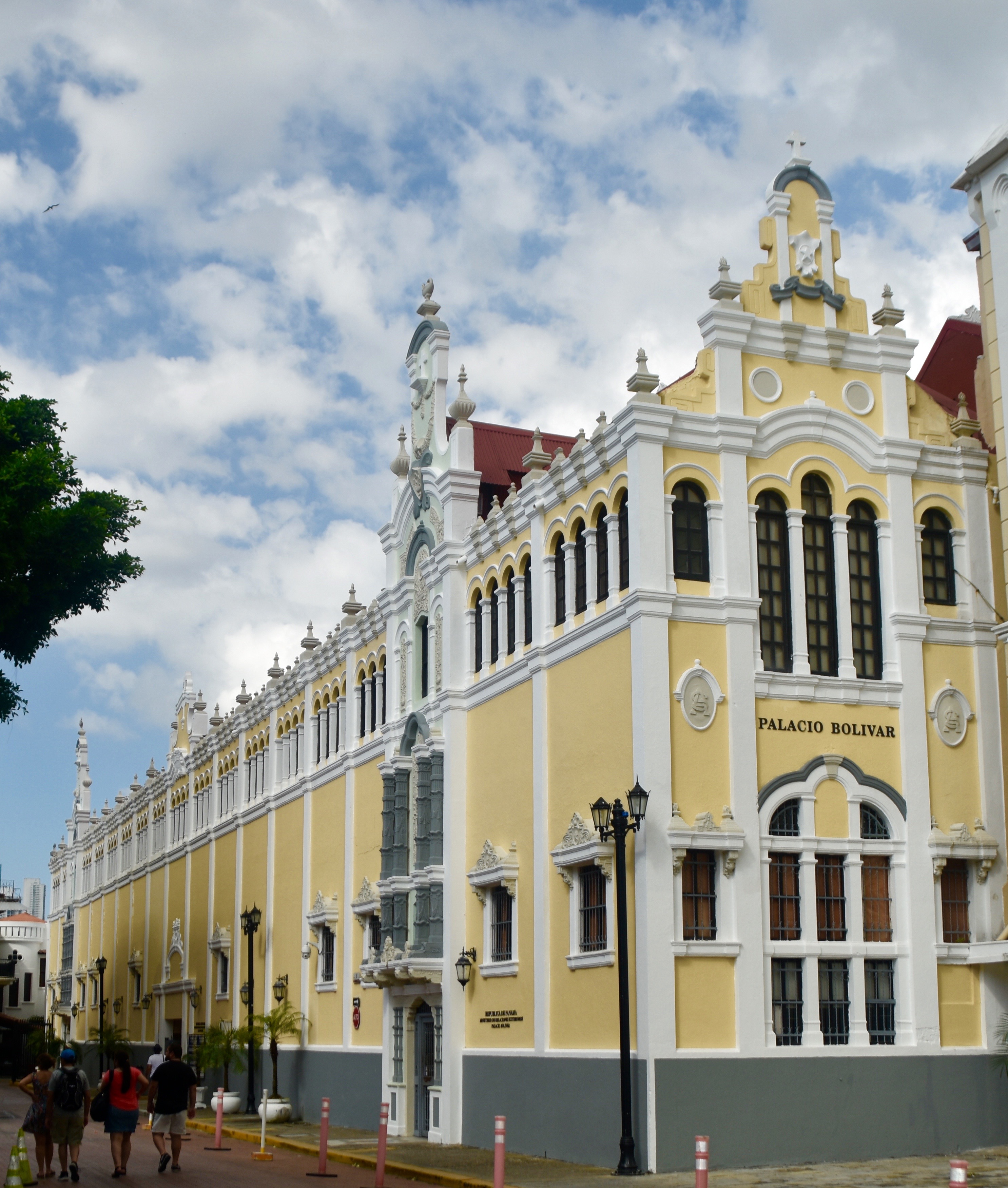
Along the waterfront there are dozens of stalls selling some good and some shitty handicrafts.
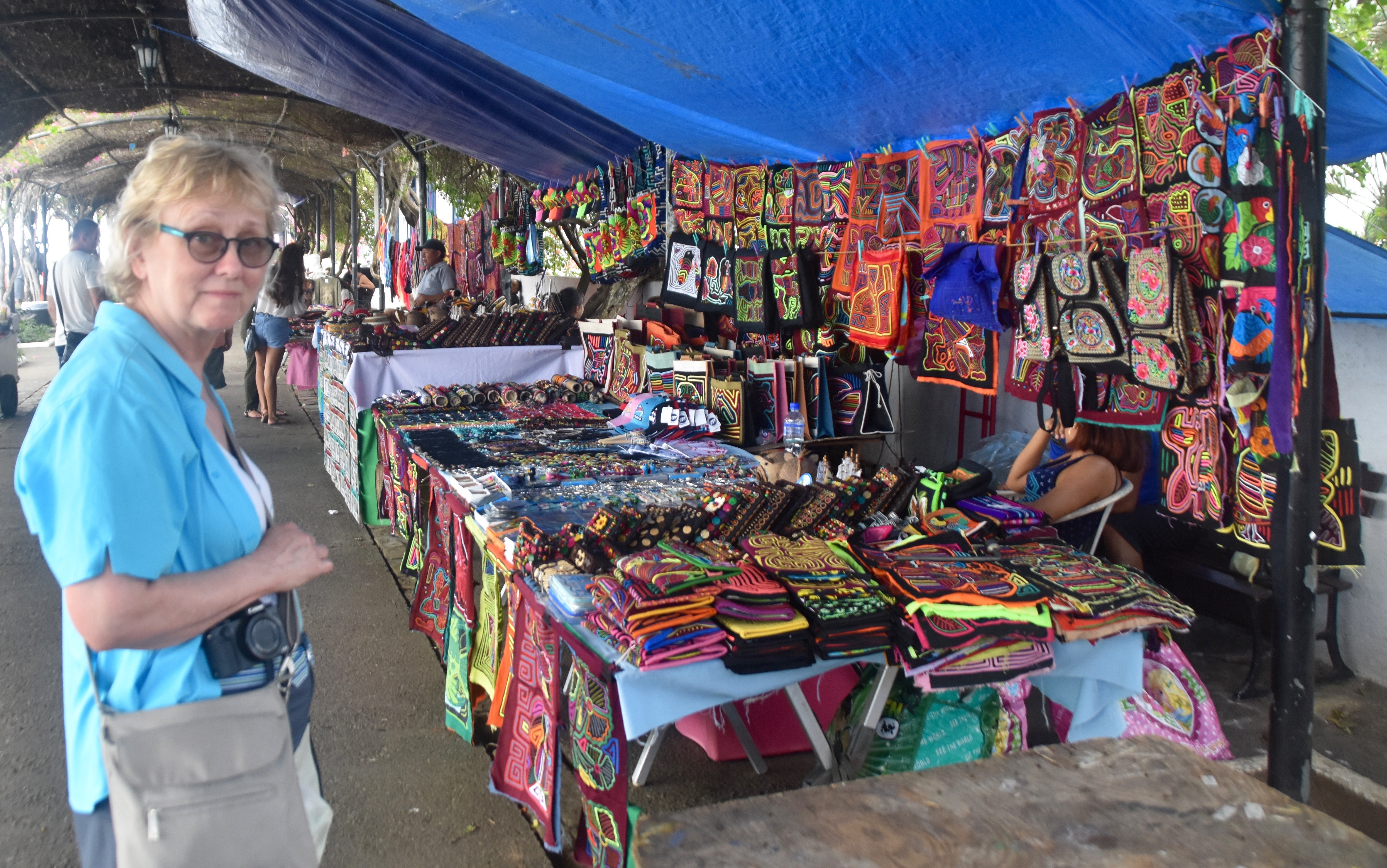
This is the view from the end of the peninsula. Those towers under wraps are on the old cathedral which is being restored.
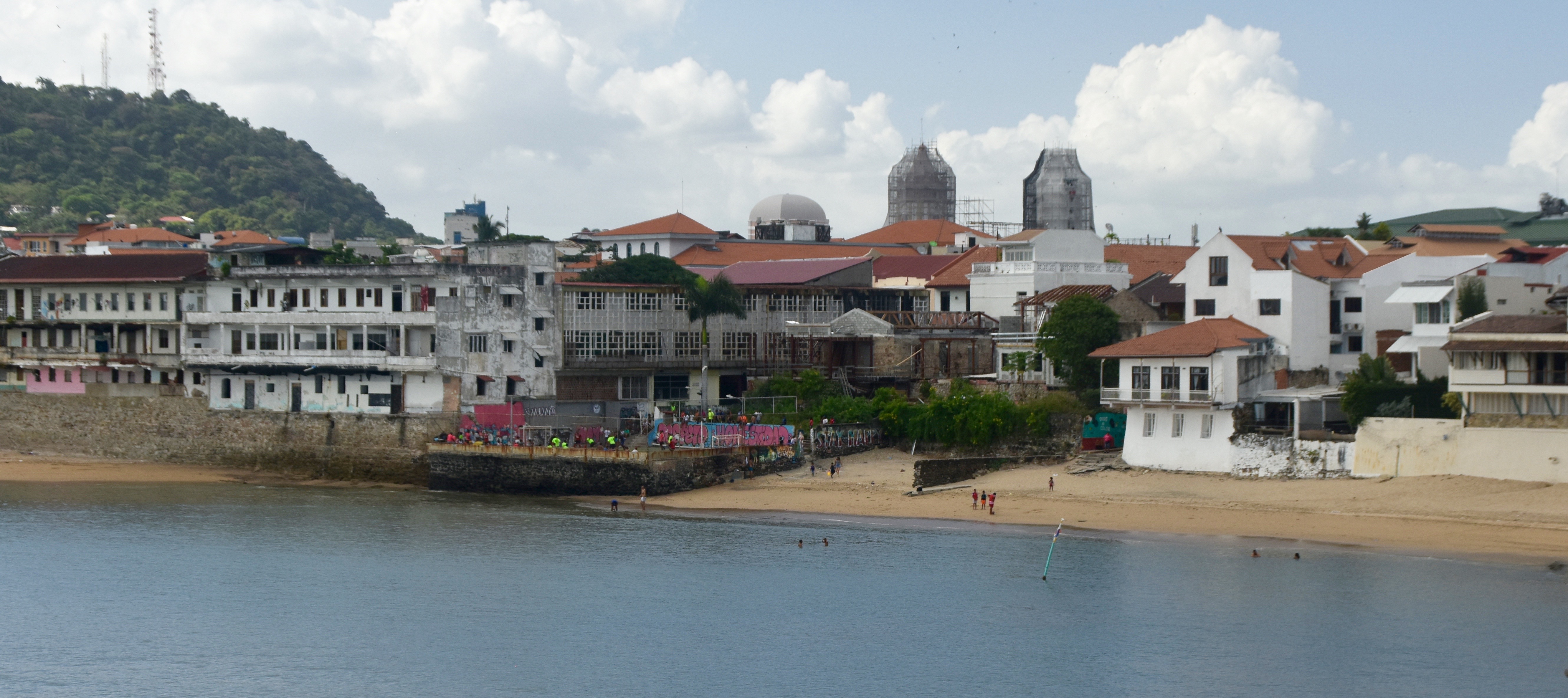
So that’s my take on Panama City, but I’ve only hit the highlights. Also well worth visiting is Metropolitan Park which has terrific views of the fifty-two skyscrapers.
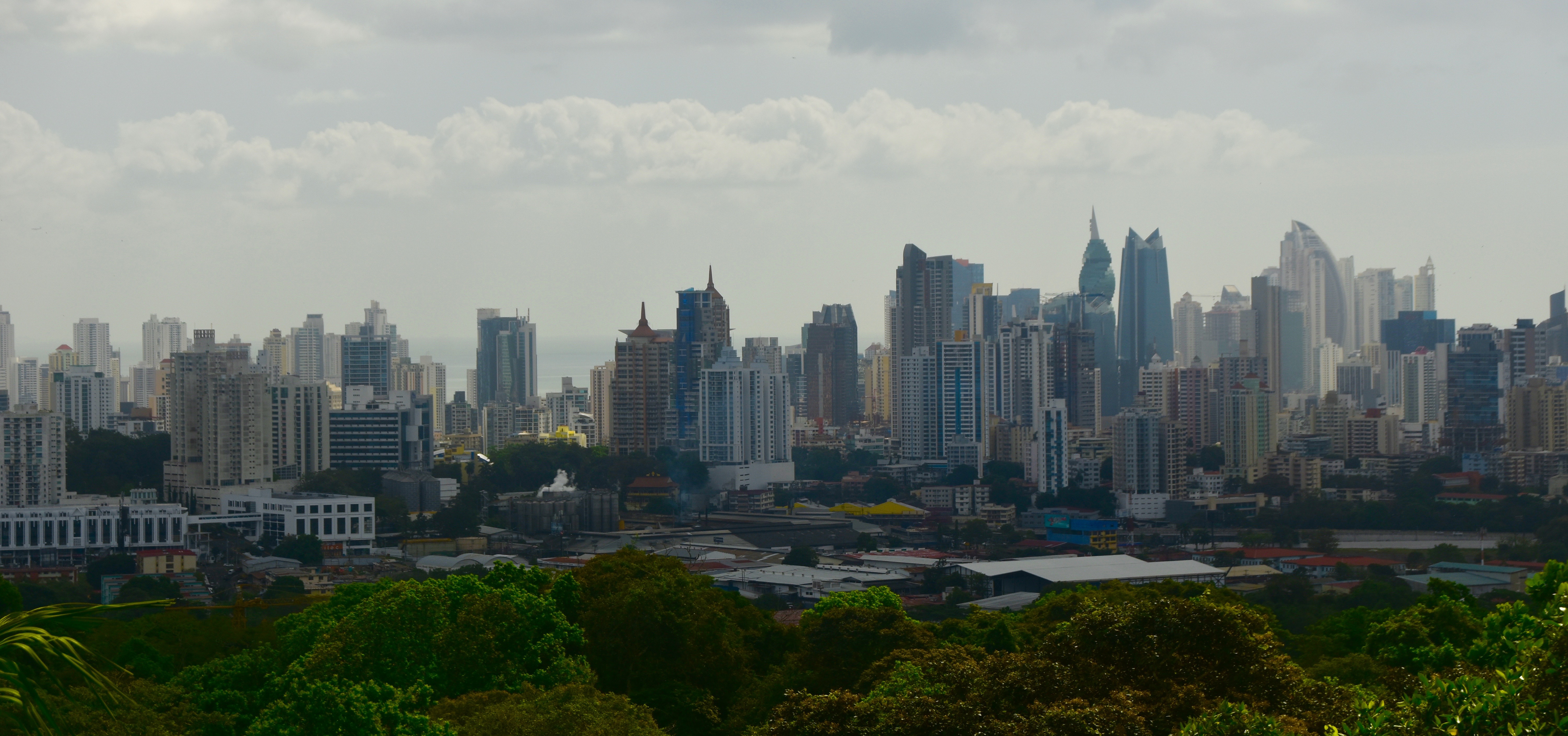
Next up is a visit to an indigenous Embera community just outside Panama City, but it might as well be a thousand miles away for all the similarities.

